




West footpath/cycleway is currently closed for essential maintenance, please use the east footpath/cycleway.
Access RestrictionsMichael Martin
FCBC Project DirectorMichael Martin’s fascinating career began with Ove Arup & Partners in the 1970s. Founded by the eponymous Danish “Philosopher Engineer”, the company is renowned for the importance it places on its values, vision and the contribution individuals can make.
Kessock to Queensferry, the long way

“They used to say there,” recalls Michael, “that responsibility is everywhere at Ove Arup. All you have to do is bend down and pick it up.”
Responsibility is a key word. You get the sense, right from his first job as a graduate engineer on the construction of the Brighton Marina to his latest role as Principal Contract Project Director on the Queensferry Crossing, Michael Martin doesn’t just pick up responsibility but scoops it up with both hands. And encourages others to do the same.
Carlisle-born Michael assumed the leadership of the FCBC (Forth Crossing Bridge Constructors) joint venture at the end of 2014 after previous Project Director, Carlo Germani, moved on to a major infrastructure project in Qatar. Already an FCBC Board member (since 2012) representing one of the partner companies, Morrison Construction, Michael was well acquainted with the Project and had a detailed knowledge of the progress to date and the challenges ahead.
"My psyche is such that I wanted to be a part of it. What civil engineer wouldn’t want to be involved? It’s an amazing construction project and I just didn’t fancy admitting to myself later on that the challenge had been there but I had avoided picking it up and had just watched from the sidelines. It’s not me.”
Michael, enjoying semi-retirement, had been invited on to the FCBC joint venture board after a distinguished career in global civil engineering working on many significant infrastructure projects with Morrison and other companies. Amongst a variety of large projects at home and abroad, he perhaps has a particular track record in Scottish bridges, past projects on his CV numbering the Kessock, Dornoch and the smaller but no less challenging Kylesku Bridges. Largely free of other work commitments, he had been able to stay very close to the Queensferry Crossing Project and was already a familiar face on site.
“Given we were midway through the job, it wouldn’t have been ideal to bring in someone from outside with little knowledge of the job. My involvement over the previous three years or so had given me a detailed grasp of all the technical and logistical issues. I hadn’t been looking for the post but I couldn’t say no. It’s too important a job and it needed somebody to come in, run it, build on the great work done since 2011 and see it through to completion. It wasn’t exactly what my wife, Mary, and I had planned for the next three years, but we both knew I would always have regretted shying away and not standing up to the challenge.
“It’s an incredibly important project. Important for Scotland, important for the industry’s reputation in Scotland when there have been a couple of high profile major infrastructure jobs that have not gone well here in recent times. This contract needs to be seen to be more successful than those. Whilst I personally have a background with Morrison (now owned by Galliford Try), I had also got to know the other FCBC shareholders, too, and I equally represent them. I know how important it is for them. For all these reasons, I couldn’t stand back from this role.”
Sitting in his office in the main site office in Rosyth, gazing out at the emerging Queensferry Crossing, Michael’s career has in some respects come full circle. As already mentioned, his notable early jobs involved technically challenging bridge projects such as Kessock and Kylesku, from both the client and contractor side of the table.

Michael Martin - Visiting the Forth Bridge
He left Ove Arup in 1980, following the opening of the Kessock Bridge where that company had been the client’s engineer, to join Morrison Construction. The Martin family (Mary and Michael have two sons, Ben and Euan, and two grandchildren) were loving life in Inverness – where they still live today – but this wasn’t the only reason to leave a global engineering design company for the apparently more modest charms of a Highland based contractor.
“In part, I joined Morrison because they were obviously doing very well. My wife was working in the finance department at Highland Council and said every second cheque she authorised seemed to be for Morrison Construction. They were small but growing rapidly and making a name for themselves. I thought, I’ll get a hands-on job of my own there to build quite quickly. I really treated it as a secondment – I had agreement from Ove Arup that a couple of years in construction would be a good thing for me and then I’d go back to them. But it didn’t work out like that.”
After a short spell doing estimation for temporary works, a project to build a bridge over the remote Loch a’ Chairn Bhain in Sutherland came along in 1984. Kylesku Bridge is a project which still gets Michael animated. “It’s not an especially big bridge, but it was exceptionally difficult to build with a hugely complex geometry and lying in a very exposed position. It was designed by my former colleagues at Ove Arup and is a fantastic bridge which has won multiple awards.
“It was something of a surprise that Morrison actually won the contract, given the lack of proven competence at that time for a job of such complexity. I was responsible for the temporary works design for the tender and I remember during the celebrations when we won the contract one of the directors saying to me “Aye, well done, but now you’ve got to build it!” That really struck home to me. Up till then, I had sort of been playing, but now this thing had to be built.”
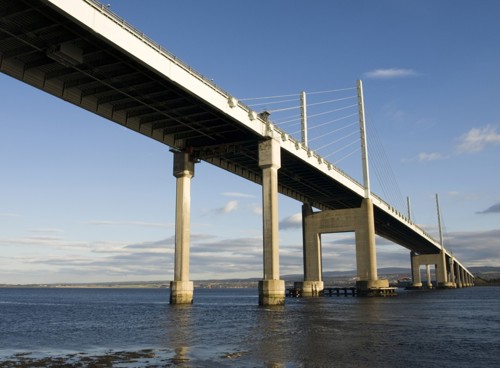
Kessock Bridge
Michael was appointed chief engineer on the project. The complexity of the – admittedly beautiful – curved design was remarkable. “There was hardly a single straight line,” says Michael. “And it was a structure that only became stable once complete. Myriad forces – structural as well as meteorological - could have brought the thing down when it was still incomplete and under construction.
“It was the most complicated thing imaginable,” Michael recalls. “If I was ever going to have a nervous breakdown, it would have been then. Ove Arup produced around 40 drawings for the construction, whereas in the engineering department we had to produce over 350 further drawings to give site personnel clear guidance on what to do.
“The temporary works were massively complicated. In fact, it was similar to the Queensferry Crossing in that we lifted the centre section with strandjacks just as we will be doing with the deck segments here. Less weight in the individual sections, perhaps, but even more technically difficult because reinforced concrete is very stiff and can be damaged if mishandled. I learned a hell of a lot on Kylesku.”
Michael was able to apply that learning on his next major bridge contract, the Dornoch Firth Crossing (opened in 1991 after a three year construction programme). This design and construct project, on which Michael was once again Chief Engineer, completed the ‘three bridges’ (Kessock, Cromarty & Dornoch) major upgrade of the A9 trunk road. As it has turned out, a number of aspects of the Dornoch project were to be replicated in much that was to follow in Michael’s career. For example, the bridge was built using the incremental launch technique being used at Queensferry for the Southern Approach Viaduct – but, at 980 metres, it was a much longer and more complex operation. It also saw Morrison working in joint venture with partners Christiani Neilson, an experience which has stood Michael in very good stead in the many JVs he has managed since.
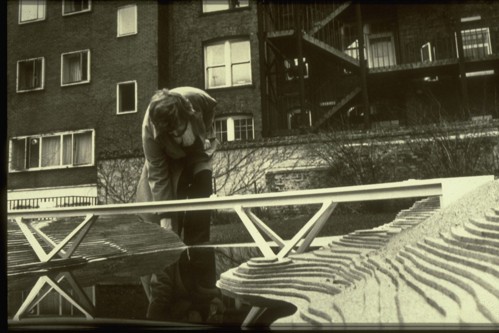
No timestamp available
No description available
Download: 154.1KB Size: (1024 x 683)px
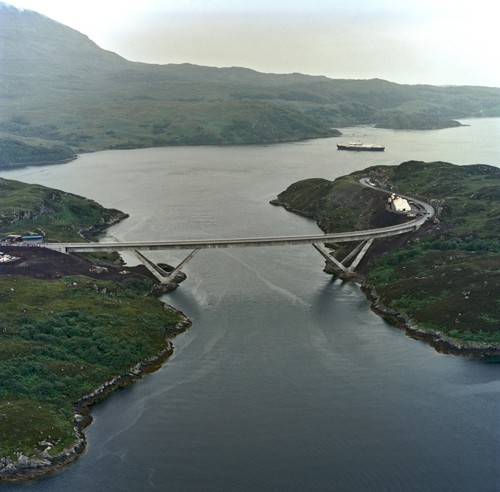
No timestamp available
No description available
Download: 241.5KB Size: (1024 x 1007)px
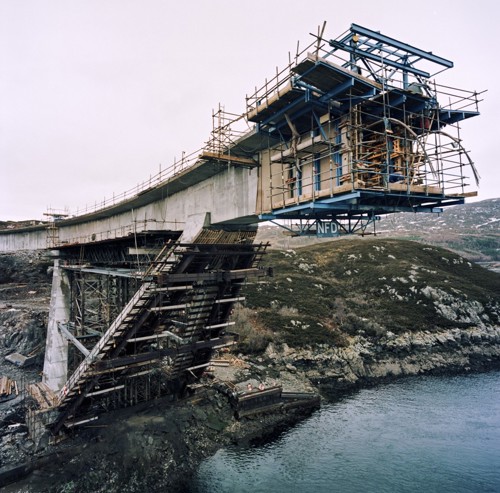
No timestamp available
No description available
Download: 334.5KB Size: (1024 x 1010)px
Around this time, Morrison acquired Shand Construction, an English company with a subsidiary office in the Middle East. For the first time, Morrison was operating on international soil and soon became the only British company to pick up reconstruction work in Kuwait following the first Gulf War. The work included water and sewerage repairs as well as the reconstruction of harbours and airports.
“Although Morrison hadn’t planned to go international at that point, we now found ourselves on the US Corps of Engineers’ list of approved contractors, so the opportunity to bid for sizeable contracts to rebuild war damaged infrastructure was very attractive and a great opportunity to grow the business. Successfully, as it turned out.”
In the years to follow, Michael took over responsibility for the international division which, by then, was turning over about £10m a year, picking up globally diverse work in Dubai, Ghana, South Africa and the former Soviet Union, focussing on emerging opportunities in the oil sector.
“I agreed with the Morrison Board that we needed a clear strategy in order to consolidate the rather disparate international focus which was challenging for a company the size of Morrison. No sooner had this been agreed than an opportunity arose in the South Atlantic.” The Falkland Islands Government were looking to enter into a five year, £40m partnership with a construction company to complete work on the remaining infrastructure needing refurbishment and repair since the first wave of contractors had left the islands following the 1982 war. So, despite that strategic focus, here was a commercial opportunity that saw him going to the Board to recommend bidding for work on the only continent Morrison was not currently working on.
“Anyway, we did bid and we won the contract,” Michael says with a smile. “In fact, it turned out to be a very successful period for the international business and, on the back of it, we won another contract in Antarctica for the British Antarctic Survey expedition. Morrison have been there ever since and have carried out some fantastically interesting projects in the harshest of environments.”
Morrison was on the up and up. No longer a small, regional contractor picking up work in the Scottish Highlands, it had grown its civil engineering, construction, homes and facilities management operations throughout the UK and was gaining a national and international reputation for the quality of its work and its approach to working closely with clients. Michael was by now head of the Infrastructure Division and playing a key role in the company’s rapid expansion, an expansion which led to the company’s flotation on the London Stock Exchange in 1996 and Michael’s subsequent appointment to the new PLC board.
Michael assigns much of Morrison’s success at the time to the emergence of the Private Finance Initiative (PFI) in the late 1980s and early 1990s. “There is no doubt that Sir Fraser Morrison, Chairman of Morrison, was the first industry leader to recognize the potential of PFI,” says Michael. “The Board asked me to set up a dedicated PFI team within Morrison to address that potential.”
His team delivered, winning a variety of important first generation PFI jobs, generally in joint venture. During this period, Michael became Chairman of Roadlink, the first winner of a PFI road contract anywhere in the UK, operating and maintaining the A69 Carlisle to Newcastle route. “It was the smallest PFI contract of the first tranche of DBFO (Design, Build, Finance & Operate) roads projects, but it was the first and we got there first, so it was immensely important to Morrison’s growing reputation.”
It was a successful, groundbreaking time for Michael’s PFI team. Following the A69 success, they won a succession of major contracts: the first water PFI contract with Scottish Water (water treatment works in Inverness and Fort William), the first Ministry of Defence PFI contract (housing for RAF Lossiemouth) and the first local authority PFI contract (construction of Perth & Kinross Council’s new offices). The contract to build the new Edinburgh Royal Infirmary was also won during this period.
The opportunity to travel had always been a major draw to the engineering profession for Michael. Growing up in Carlisle, he recalls a friend of the family showing him some back issues of the industry journal New Civil Engineer. “I remember looking at the jobs pages with these marvellous salaries of up to £3,000 a year! And vacancies abroad, especially in Africa. I really fancied travelling the world. I didn’t really have any idea what civil engineering was but it sounded exciting. So I decided that would be the career for me.”
After graduating from Leeds University in 1975 with a BSC (Hons) in Civil Engineering, a move to London followed to take up his appointment with Ove Arup. But he and Mary didn’t take to life in the big city and their desire to see the world, coupled with a love of the wild outdoors which has endured to this day, nearly saw the Martins emigrate to Canada. It was only the Canadian Embassy being closed on a Saturday and some timely, friendly advice from a colleague that stopped this story being very different. The advice was “Look, lad, Canada’s a bit drastic if you just want to live in the countryside. How about working on this bridge job in the Highlands?”
The bridge was Kessock, outside Inverness, where the Martin family has been based ever since. Ironically, Michael missed working with his Queensferry Crossing opposite number, Transport Scotland’s Project Director David Climie, by a matter of a few months.
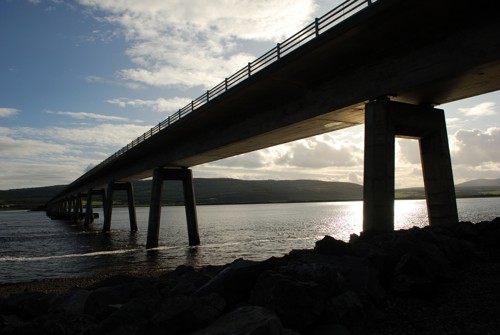
Dornoch Bridge
Years later, even though not permanently stationed abroad, his job heading up Morrison’s Infrastructure Division was now allowing him the sort of international travel opportunities that had caught his eye in the job vacancy pages. Trips to the then Soviet Union to investigate potential opportunities around the opening up of the oil fields of Azerbaijan stand out. One for wholly unexpected reasons. The first visit involved a stopover in Moscow where Michael got to see the Kremlin and Red Square just a week after the famous attempted 1991 coup against President Gorbachev when tanks had entered Red Square to quell the rebellion. Being there at such a momentous time in world history “was one of the highlights of my working life,” says Michael.
A subsequent trip was even more of an adventure. He and a colleague were delayed on a flight to St Petersburg and then missed their connecting flight to Baku in Azerbaijan. This was the only route from the West to what was still effectively a Soviet Republic. “We found ourselves stranded in St Petersburg without a visa and the next flight to Baku wasn’t until the following night. There were only two international hotels in the city at that time and both were full because of an international Jehovah’s Witness conference of all things.”
Luckily, their English-speaking taxi driver took them under his wing and found them a Russian-only hotel for the night – not an easy, or strictly legal, thing to do given their visa-less status.
“I have no idea where this place was, somewhere in the St Petersburg suburbs. He helped us speak to the receptionist and paid for us in roubles because dollars, which were all we had, were an illegal currency. After checking in, I remember going down for a meal. We sat at a table, there was a band playing, the menu was all in Russian and we were getting odd looks from people. Try as we might to blend in, we stood out like sore thumbs.”
A little later, Russian hospitality kicked in. “It wasn’t long before we had 40 people round our table, bottles of vodka, lots of excited conversation most of which we couldn’t understand but, every now and again, someone would say the name of an English football club and we would shout “Yes!” and they would pour another slug of vodka for yet another toast. A great evening!”
By 1998, Michael had been promoted on to the Main Board of Morrison Group PLC, but what happened next was unexpected. The Morrison Group was purchased by Anglian Water Group (AWG) in 2000. The takeover was a difficult one and Michael soon found himself the only member of the old Morrison Board left at AWG. During the next three years, he first took over responsibility for the AWG Engineering & Programme Management business, then it was back to running the Morrison Construction business before a period running AWG’s “growth” Facility Management Division which included, amongst others, the group’s IT, public sector and environmental services.
By 2005, it had become clear that AWG was heading for a major structural reorganisation taking it back to its regulated water company roots and divesting it of its other businesses. Not wanting to go through another sale, Michael opted to take on a temporary role as AWG Head of Health & Safety where he introduced a new, effective, group-wide safety regime.
After another year, Michael felt the time was right to take stock. “Things at AWG had not been fun, in truth, so with agreement I decided to take early retirement. AWG were very supportive of me during my time with them, but, looking back and despite my achievements at AWG, it had been disappointing to get on the board of the Morrison Group only for the picture to change so much in a relatively short time.”
There were some advantages to retirement: time spent in the great outdoors indulging his great passion for salmon fishing, for example, or out on the golf course where his handicap got down as far as 9 (“It’s not that any more, but I have kept the certificate proving it was as low as that once!”). But people with a career like Michael’s do not stay prematurely retired for too long. He was soon providing management consultancy services for global multi-disciplinary firm Atkins Ltd before, a year down the line, he was approached to become Chief Operating Officer of Scottish Water Solutions, the major public-private sector joint venture with a massive capital construction and refurbishment programme to deliver on behalf of Scottish Water. Like Michael’s current role on the Queensferry Crossing, Scottish Water Solutions involved the challenge of leading a joint venture comprising several different companies with differing work cultures and several sets of shareholders. Despite this challenge – or, perhaps, because of it – Michael rates it as “one of the best decisions I’ve ever made in my life.”
“SWS operated in every corner of Scotland and I got to visit each and every one. It was a limited life company, the programme being there to deliver £2.4 billion worth of work. When that programme of works was delivered, that was the end of the company. We took it from a position where it was not performing all that well to where it ended up being fantastically successful.”
With a more satisfying professional experience in the rear view mirror this time, Michael retired again. Not long after, he was approached by former colleagues at Galliford Try (who had purchased the Morrison business from AWG) and asked to sit on the Board of FCBC, the joint venture which had won the contract to design and build the biggest infrastructure project in Scotland in a generation. And then, as we know, in late 2014 he stepped into the FCBC Project Director role.

There’s been a whole world in between, but there’s a satisfying symmetry to Michael’s journey from the Kessock Bridge to the Queensferry Crossing. Both are major bridges in the country’s strategic road network, even if the scale has grown commensurate with Michael’s career and experience. “This is major, world-class engineering being done here at Queensferry,” he says. “There hasn’t been another bridge on this scale built in Britain and I predict there won’t be again in my lifetime. Amongst all the complexities and technical challenges, we should remember that during construction the bridge deck itself is going to be the longest free cantilever cable stayed bridge in the world. The laying of the foundations, the construction of the 210m high towers, the construction and launching of the approach viaducts and the erection of their supporting piers – and a million tasks in between - have all been major challenges successfully met by the fantastic project team. And the bridge isn’t the only challenge. The roadworks connecting the new bridge to the existing roads network are a very complicated construction project in their own right. The north side works, in particular, are very complex. The only thing more complex might be putting a motorway through a city centre but for a rural location, which is what it really is, it’s as hard as it gets.
“A job like this demands the best expertise available in our industry, globally. And that is exactly what we’ve got here. It is an honour to be leading such a team, able and willing to take up the responsibility to deliver a world class structure to our client. We can be immensely proud of what we have achieved so far and can look forward to completing an outstanding bridge to sit alongside its world famous neighbours. It will be a bridge in which people can take pride for generations to come.”